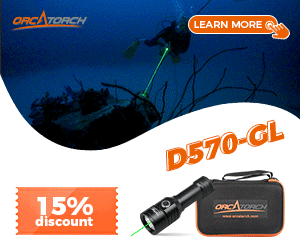halocline
Contributor
it's interesting that a lot of regulators don't actually have torque specs in the manuals for much of anything anymore, it's "snug", as soon as you feel the metal grab stop, they're all held in with the o-rings which as soon as they start compressing put outward pressure on the threads making it somewhat difficult to unscrew unintentionally, and even with proper torque specs, both yoke and din turrets can unscrew themselves over time.
I can absolutely say that both DIN and yoke retainers are not 'held in' by o-rings. All the o-rings do is keep gas from escaping. The air pressure in the HP chamber does put some pressure on the fitting which could conceivably decrease the likelihood of accidental loosening, but I don't think its much. This is especially true on fittings like SP where the o-ring is on the inside end of the fitting, meaning any HP air is confined to a small area. The fittings are held in place by torque. It's not like a tank valve where there's a big area for the HP air to essentially lock the valve in place.
If the fittings are not sufficiently tight, it's very easy for them to get accidentally loosened when someone, like a boat crew member, picks up the tank by the regulator. This is pretty common in places like cozumel where divers entering small boats often pass their rigs up to the DM or captain. I've seen yoke fittings get loosened this way a few times. In fact, if you needed to remove a yoke fitting on the boat (I have no idea why unless it got loosened and the o-ring extruded out) you could use the tank to hold the fitting and give a good shove on the regulator.
The SP spec is about 22 ft lbs, which is fairly tight, definitely beyond 'snug.'
---------- Post added November 6th, 2014 at 08:42 AM ----------
Well, as i indicated, I didn't know anything about converting regs. Since DIN screws into the tank, I thought maybe you had to replace the tank valve as well, so the 1st stage could fit into the tank valve appropriately. Obviously, this isn't true, now that I've learned more about how the Yoke>DIN conversion is accomplished.
Okay, I think I understand. You are interested in converting both your regulator and your tanks to DIN? There is really zero reason to do that unless you are diving in high entanglement areas, i.e. technical wreck or cave diving. You are right that you need to match the regulator fitting and tank valve; in fact, most people use either yoke or DIN depending on the tanks that are available in whatever part of the world they're diving in. In Europe, DIN is the standard, in the U.S. and caribbean, yoke. Really and truly, there is not any real-world difference in performance of either system for recreational diving. DIN valves in perfect condition do offer a theoretically more secure seal, and the diver (regulator owner, anyhow) is responsible for the o-ring. But here on planet earth, DIN valves can suffer lots of damage more easily than yoke valves, especially on rental tanks that lead a tough life, and as such, can offer problems just like yoke fittings in bad shape.



